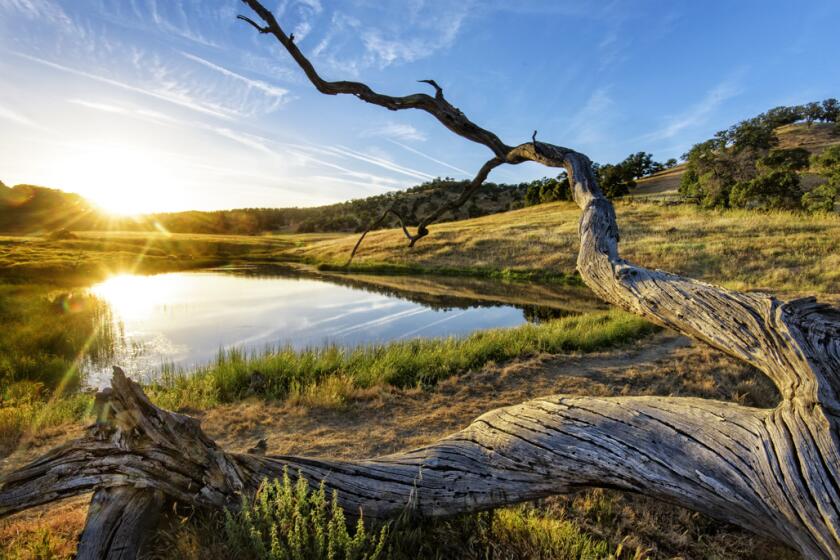‘Tis Season to Have Gaelic Old Time in Scotland
While it may not require the same concentration as preparing for a calculus midterm, travel can be greatly enhanced by studying the cultural and historical highlights of your destination. This is particularly true when that destination is in the process of celebrating a special historical event or series of events.
Take Scotland, for example, which this year is commemorating the 400th anniversary of the execution of Mary, Queen of Scots.
“Many American travelers don’t seem to be aware that Scotland is a separate entity from England,” says Ken Hanley, head of Small World Tours, a Scottish tour company. “While we’re both part of the United Kingdom, we’re quite different in many ways.”
Scotch and Scots
Some travelers freely refer to Scotland as England and use England interchangeably with Great Britain and the United Kingdom, Hanley says. “And Scotch, of course, is the name of a liquor, not the name of the people in Scotland who are Scots. The more people know about our history, the more they’ll enjoy their visit here, especially this year when there’ll be so many things going on about Mary.”
Scotland also has its own passes for travelers. To illustrate, the Travelpass permits you to buy seven- or 14-day passes that allow unlimited travel on bus, train and ferry through the Highlands and islands. This includes such destinations as Edinburgh and Glasgow. Between June and September, seven-day rates are about $72, 14-day rates are $110. Rates are lower during the off-peak periods of March through May, then October.
Edinburgh, the capital, also has a city pass good for two to 13 days, from about $12 for two days to $35 for 13 days. This card also provides discounts of around 10% from shops and sightseeing attractions plus vouchers worth $3.40 off some coach tours. There is also an Edinburgh Freedom Ticket, which gives unlimited travel on Lothian Region Transport for one day for a little more than $2.
Edinburgh includes both Edinburgh Castle, where Mary gave birth to her son--known as James VI of Scotland and James I of England--and the Palace of Holyroodhouse, where Mary also lived.
While the Britrail Pass also covers Scotland, there are separate Regional Rover rail passes. The seven-day Freedom of Scotland Rover, for about $72, allows unlimited rail travel.
The Travelpass can be bought in the United States through travel agents or the Britrail Travel International office in Los Angeles, but the Edinburgh city card, Freedom Ticket and Freedom of Scotland Rover passes have to be bought in Scotland.
As for driving in Scotland, travelers should recognize their own capabilities, Hanley says. “Other than just renting and driving your car all the time, there are several options. Budget permitting, you can hire a car and guide, hire a guide to drive your rental car, or drive yourself between cities and just hire a guide within some cities where there is much more to see.”
Driving Tips
If you are driving between cities, find out from the local tourist offices if there are any days or periods when there might be heavier or lighter traffic.
“Give yourself plenty of time,” Hanley suggests. “We don’t have as many lanes as on American highways, so it could take a wee bit longer than you expect to get to your destination.”
Tourist information centers throughout Scotland can make reservations for travelers at bed-and-breakfast inns for nominal sums.
Within cities, find out in advance where to park at tourist attractions. “Many travelers park their cars unnecessarily far from places,” Hanley says. “You can always find out from the attraction itself, the tourist office, or even the concierge at your hotel where you can park.”
If you are using public transportation to get to a sightseeing attraction, find out exactly where a bus would drop you. Tour buses would probably take you directly to the entrance, but a public bus might let you off a considerable distance from it.
This factor might be particularly important if weather is an issue. “We see a number of travelers who have to go out and buy heavier clothing,” Hanley says. “U.S. clothing tends to be more lightweight than ours. Depending on the time of year, bring a heavier jacket or wrap, especially if you’re going to be visiting castles and palaces, which tend to be on the drafty side.”
There are some excellent shopping opportunities that travelers often miss, Hanley says. For example, if you are interested in woolen items, Pringle’s Woollen Mill in Edinburgh will provide free transportation to and from your hotel.
American travelers also sometimes miss out on lower-priced lunches, Hanley says. “Pubs are open all day in Scotland, unlike England where they close part of the day, and there are usually less-expensive lunches you should be on the lookout for such as a Ploughman’s Lunch, which is a platter of cold meats and cheese, and meals of the day. A Crofter’s Platter, which also features cheese and cold meats, is another lunch possibility at some pubs.”
Hanley also recommends checking the cafeterias at the department stores along Princes Street in Edinburgh.
While hotels are usually not considered budget dining sites, some properties may have all-you-can-eat buffet lunches. “This is also something travelers should look into,” Hanley says. “Hotels are very competitive about lunch and you can find inexpensive meals. Dinners are another story.”
If you are interested in trying haggis, a Scottish culinary specialty, don’t be discouraged if you don’t see it on a menu, Hanley says. “Ask for haggis anyhow and it may be available, without being cited on the menu. While you can find haggis dishes at fish-and-chip shops, it’s deep fried at these places and not the real thing.”
The amount of time you spend sightseeing at various locations is something else that should be researched. Scotland has many castles, palaces and other attractions, and some warrant considerably more time than others. A good example is Edinburgh Castle, a genuinely massive structure with different levels and many separate rooms and attractions.
“You can’t do justice to a place like this in half an hour,” says tour guide Gordon Sime. “Travelers are often surprised at how much they find here, and then they don’t have the time to see as much as they would like to.”
Another misconception some travelers have is the general atmosphere at the country house hotels, a type of accommodation becoming more popular with Americans. These establishments, usually estate-like homes converted to hotels, are filled with venerable-looking books, paintings and other items reflecting a considerable past.
“American travelers understand standard hotels and motels, but they’re not used to country house hotels and they sometimes think these places have a stiffer atmosphere than they really do,” says David Corkill, general manager of Sunlaws House Hotel, a representative country house hotel at Kelso Roxburghshire.
Traffic to Scotland is expected to rise this year, not just because of the Mary, Queen of Scots anniversary, but due to the late May start-up of a new airline, Highland Express, providing nonstop flights from Newark/New York to Prestwick (Glasgow). Northwest also flies nonstop to Prestwick from New York/JFK, while British Airways and British Caledonian provide service from LAX to London with connecting flights to Scotland.
Highland Express is also offering free round-trip Scottish City Link motor coach transportation from Prestwick to 13 major cities and towns in Scotland.
More information on Scotland is available from the British Tourist Authority, 350 S. Figueroa St., Los Angeles 90071; phone (213) 628-3525.
Sign up for The Wild
We’ll help you find the best places to hike, bike and run, as well as the perfect silent spots for meditation and yoga.
You may occasionally receive promotional content from the Los Angeles Times.



